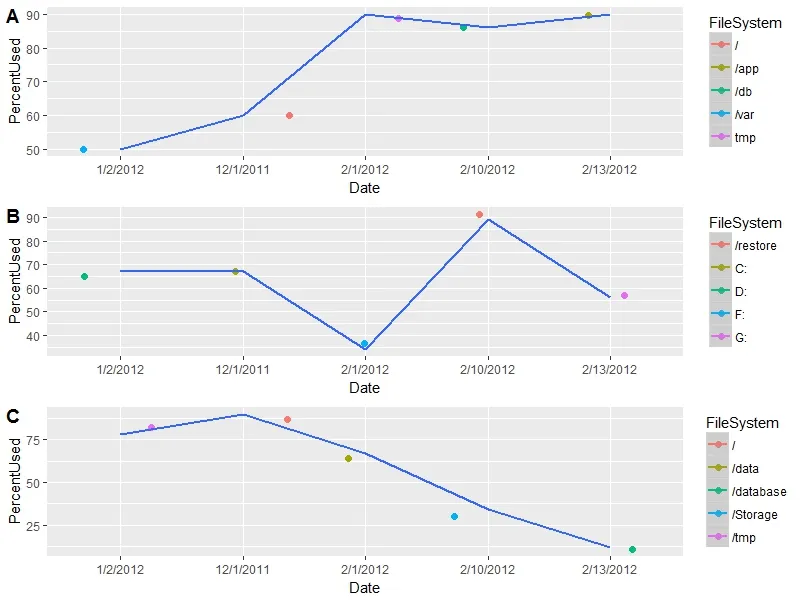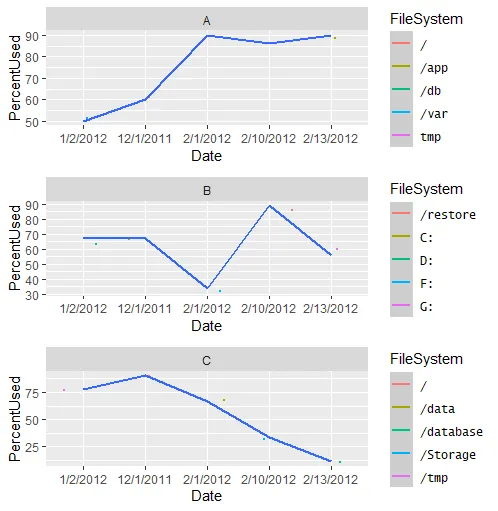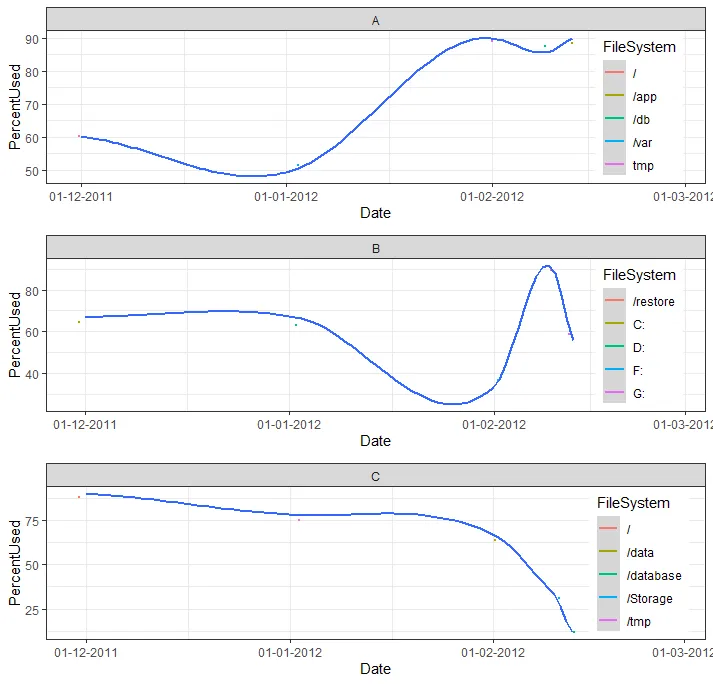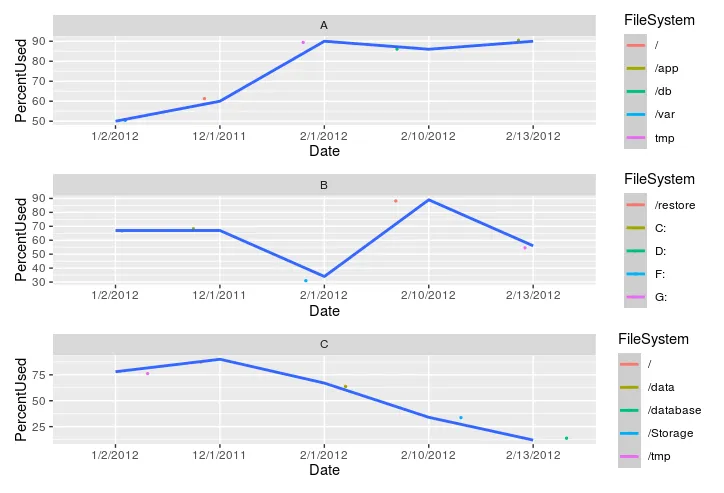我有这个数据框:
x <- data.frame(
Date = factor(rep(
c("12/1/2011", "1/2/2012", "2/1/2012", "2/10/2012", "2/13/2012"),
3
)),
Server = factor(rep(c("A", "B", "C"), each = 5L)),
FileSystem = factor(c(
"/", "/var", "tmp", "/db", "/app", "C:", "D:", "F:", "/restore",
"G:", "/", "/tmp", "/data", "/Storage", "/database"
)),
PercentUsed = c(
60L, 50L, 90L, 86L, 90L, 67L, 67L, 34L, 89L, 56L, 90L, 78L,
67L, 34L, 12L
)
)
x
#> Date Server FileSystem PercentUsed
#> 1 12/1/2011 A / 60
#> 2 1/2/2012 A /var 50
#> 3 2/1/2012 A tmp 90
#> 4 2/10/2012 A /db 86
#> 5 2/13/2012 A /app 90
#> 6 12/1/2011 B C: 67
#> 7 1/2/2012 B D: 67
#> 8 2/1/2012 B F: 34
#> 9 2/10/2012 B /restore 89
#> 10 2/13/2012 B G: 56
#> 11 12/1/2011 C / 90
#> 12 1/2/2012 C /tmp 78
#> 13 2/1/2012 C /data 67
#> 14 2/10/2012 C /Storage 34
#> 15 2/13/2012 C /database 12
我想在每个
facet_wrap网格旁边放置一个图例,它自己的FileSystem:当我这样做时,它会将图例放在所有
FileSystem的图的一侧。是否可能将每个服务器的FileSystem放在每个网格旁边?ggplot(x, aes(Date, PercentUsed, group=1, colour=FileSystem)) +
geom_jitter(size=0.5) + geom_smooth(method="loess", se=T) +
facet_wrap(~Server, ncol=1)






geom_jitter中,您将点的大小设置得非常小,我不确定为什么,但我将其保留为原样。点确实存在,但很难看到。 - joran%+%运算符有些好奇。你能不能解释一下它是什么? - Legend